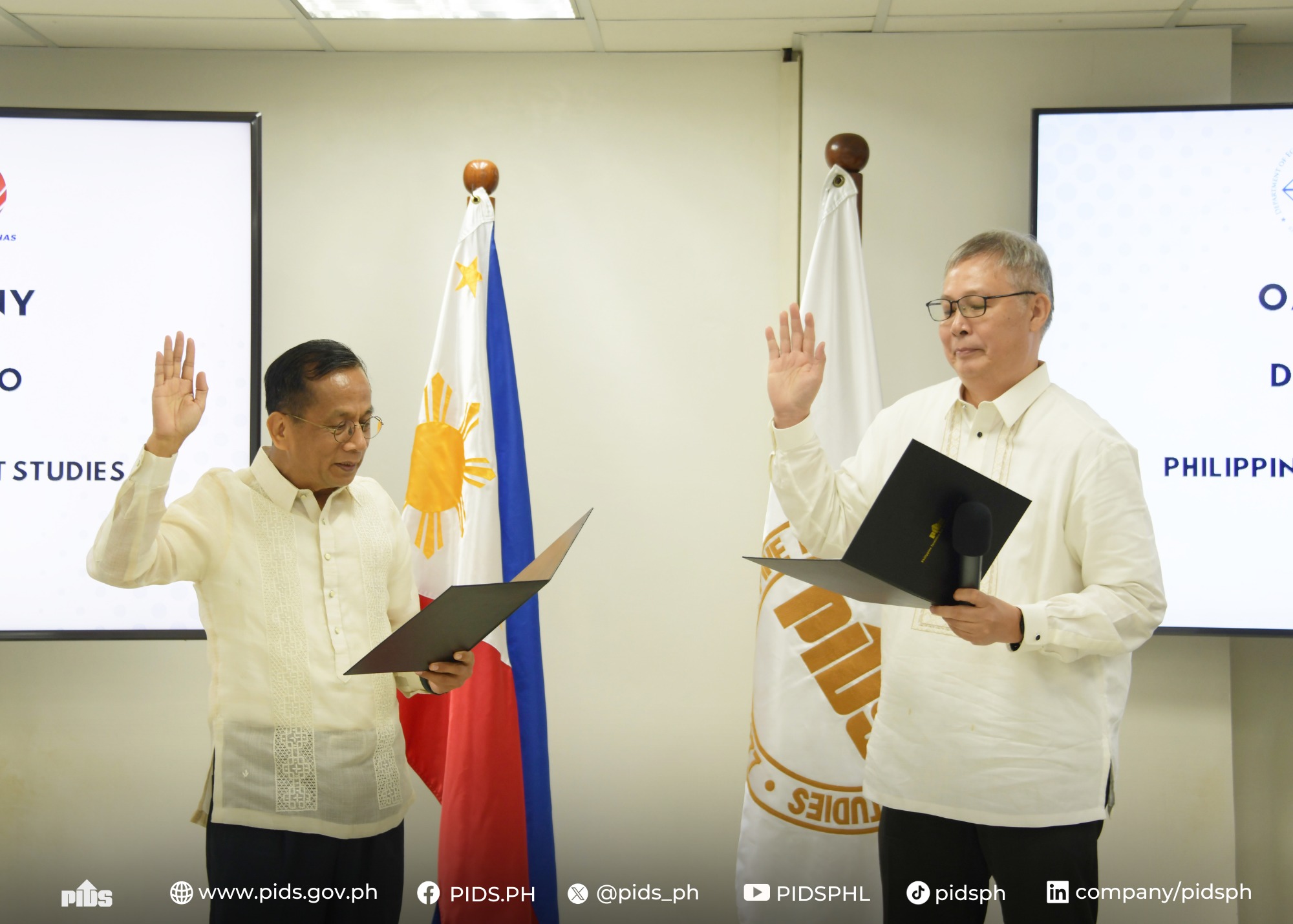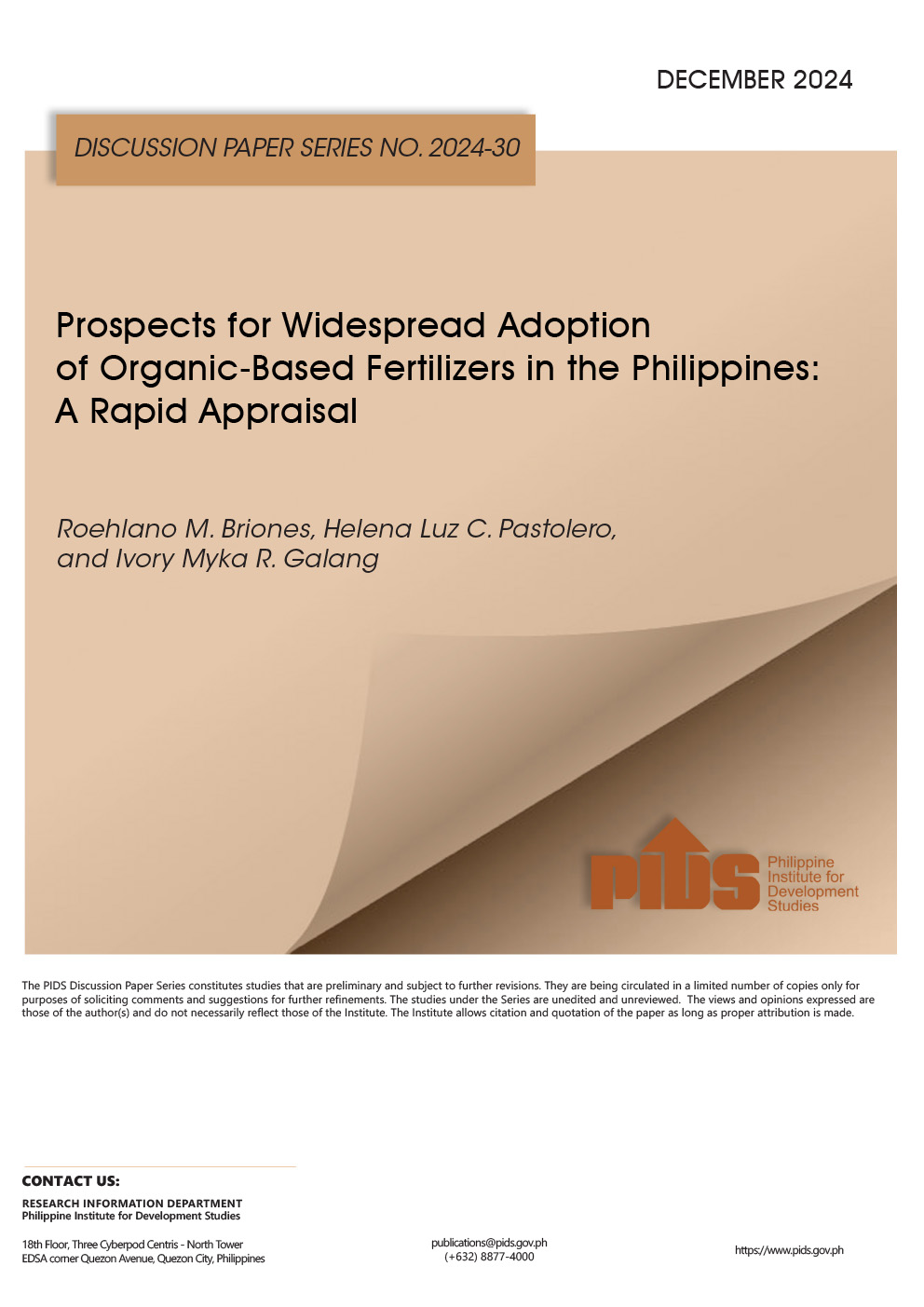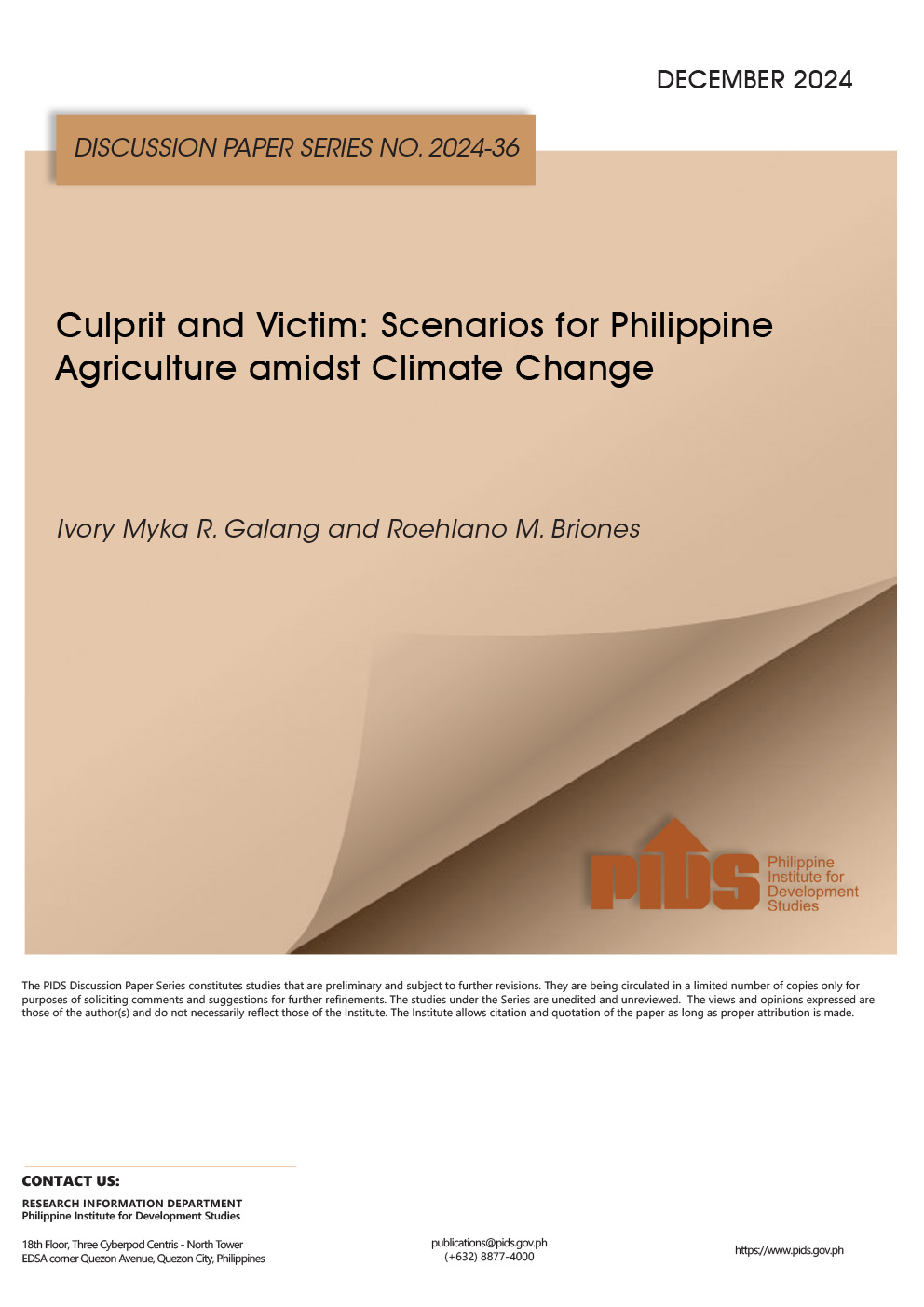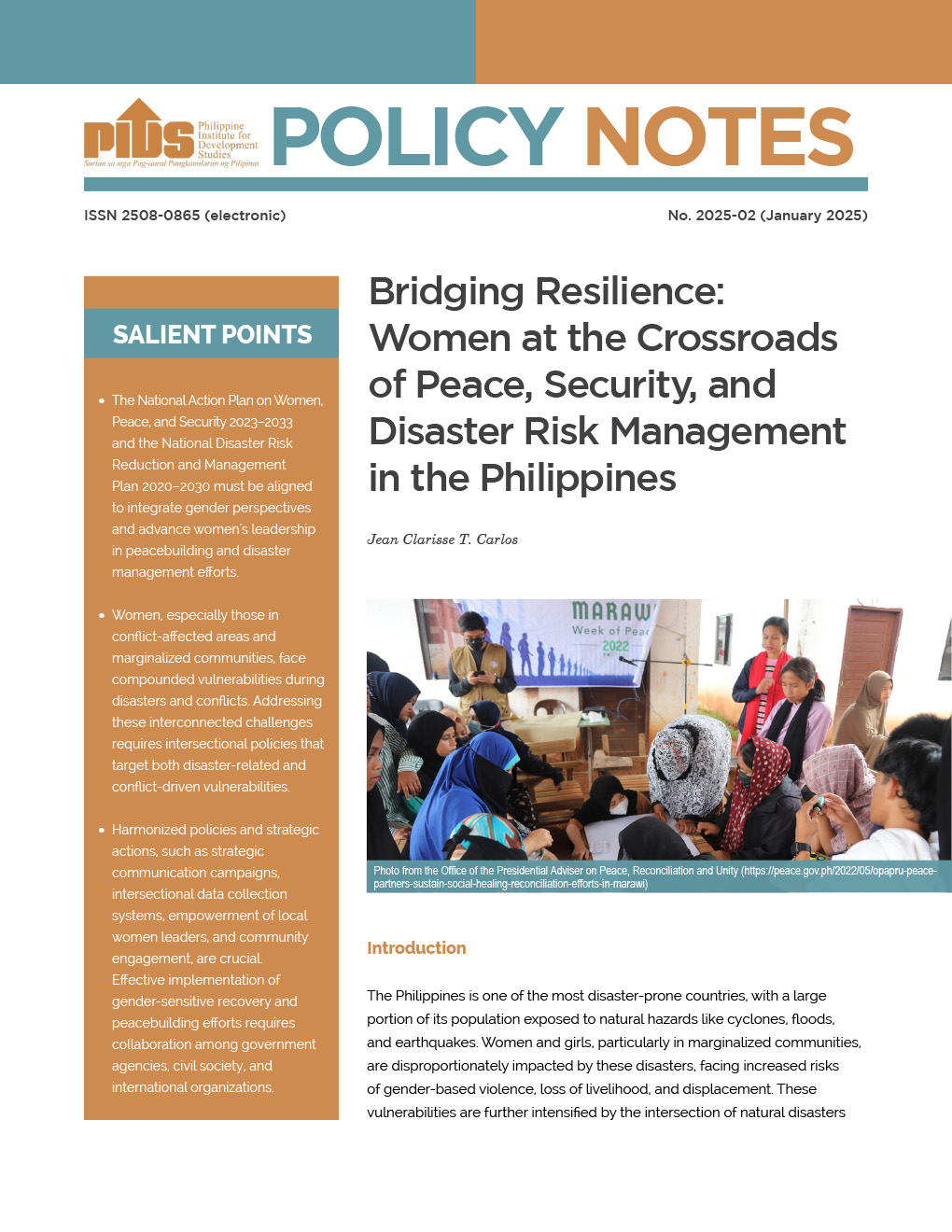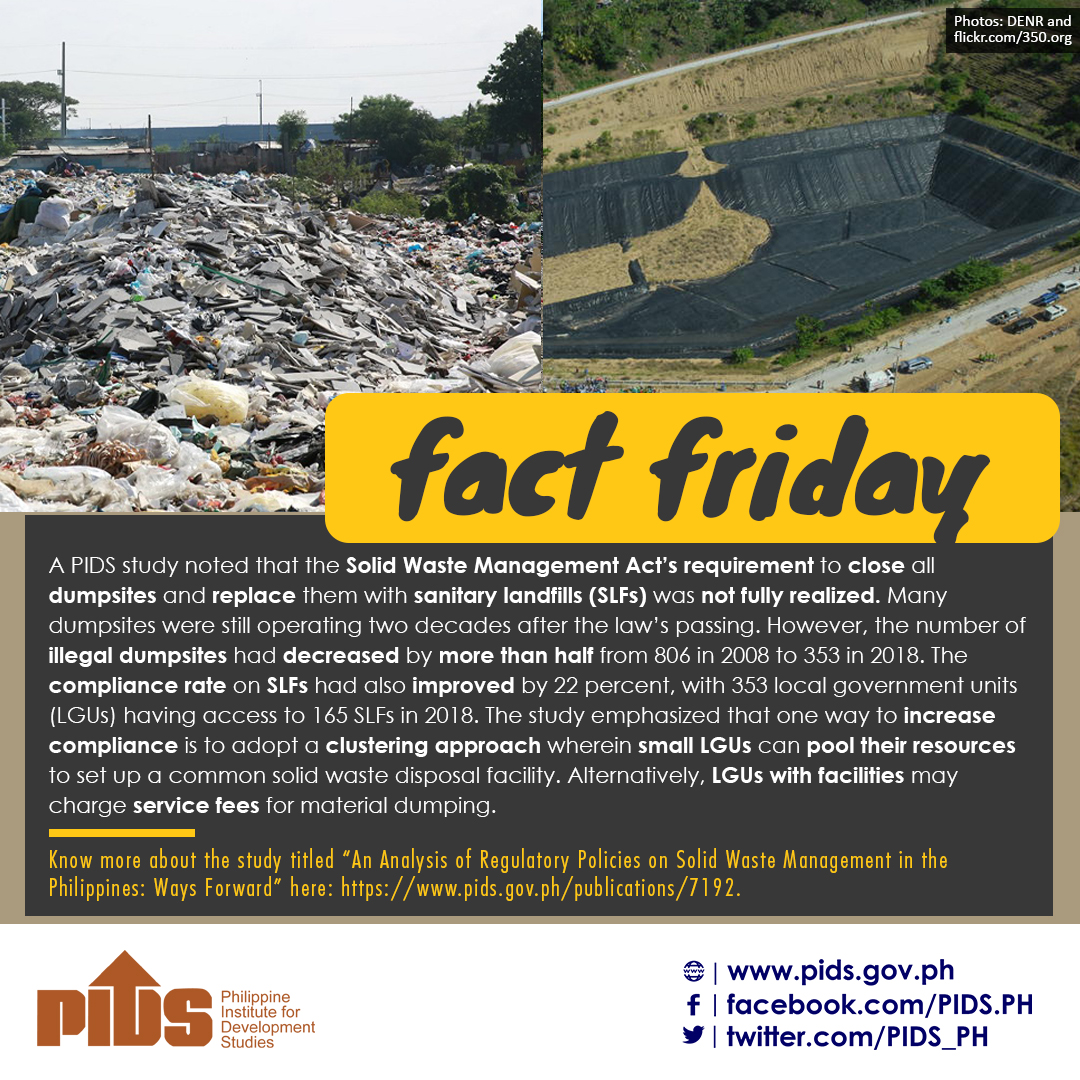
Hello, PIDS friends! Here's our #PIDSFactFriday for the week on the state of solid waste management in the Philippines.
A PIDS study noted that the Solid Waste Management Act’s requirement to close all dumpsites and replace them with sanitary landfills (SLFs) was not fully realized. Many dumpsites were still operating two decades after the law’s passing. However, the number of illegal dumpsites had decreased by more than half from 806 in 2008 to 353 in 2018. The compliance rate on SLFs had also improved by 22 percent, with 353 local government units (LGUs) having access to 165 SLFs in 2018. The study emphasized that one way to increase compliance is to adopt a clustering approach wherein small LGUs can pool their resources to set up a common solid waste disposal facility. Alternatively, LGUs with facilities may charge service fees for material dumping.
Know more about the study titled “An Analysis of Regulatory Policies on Solid Waste Management in the Philippines: Ways Forward” here: https://www.pids.gov.ph/publications/7192.
A PIDS study noted that the Solid Waste Management Act’s requirement to close all dumpsites and replace them with sanitary landfills (SLFs) was not fully realized. Many dumpsites were still operating two decades after the law’s passing. However, the number of illegal dumpsites had decreased by more than half from 806 in 2008 to 353 in 2018. The compliance rate on SLFs had also improved by 22 percent, with 353 local government units (LGUs) having access to 165 SLFs in 2018. The study emphasized that one way to increase compliance is to adopt a clustering approach wherein small LGUs can pool their resources to set up a common solid waste disposal facility. Alternatively, LGUs with facilities may charge service fees for material dumping.
Know more about the study titled “An Analysis of Regulatory Policies on Solid Waste Management in the Philippines: Ways Forward” here: https://www.pids.gov.ph/publications/7192.
Gallery Images:




